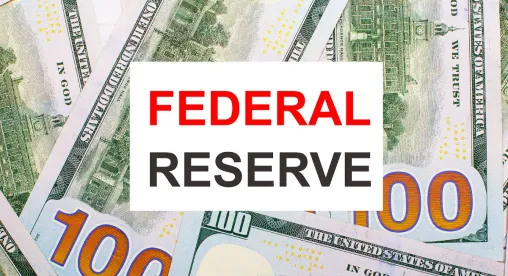The Federal Reserve issued a Supervision and Regulation letter earlier this week to all state member banks (“SMBs”) regarding their involvement in activities involving stablecoins, taking an even more reticent position than the Office of the Comptroller of the Currency (“OCC”) took regarding national banks and stablecoins in January 2021.
The letter, SR 23-8, specifically tells state member banks that they must receive “supervisory nonobjection” from the Fed prior to “issuing, holding, or transacting in dollar tokens to facilitate payments.” This is the second time this year that the Fed has addressed SMBs specifically regarding cryptocurrency-related concerns. (The first time was, as we reported in January, when the Fed issued a new policy statement in response to inquiries regarding crypto-asset-related activities, stating that there is now a rebuttable presumption that SMBs may not engage in activities that are impermissible for national banks.) The nonobjection process described by the Fed in the letter requires the SMB, before engaging in any activity related to stablecoins, to “notify its lead supervisory point of contact ... of the bank’s intention to engage” in the activity and then to await a notice of nonobjection before proceeding with the activity. The Fed explains that its supervisory staff will focus on the risks identified in its January policy statement to determine whether the SMB should receive a notice of nonobjection, specifically: 1) operational risks such as clarity of roles, responsibilities and liabilities of the parties involved in the activity; 2) cybersecurity risks such as those “associated with the network on which the dollar token is transacted, the use of smart contracts, and any use of open source code”; 3) liquidity risks that could be caused by substantial redemptions of dollar tokens that then leads to rapid outflows of deposits, as already experienced by those banks that were involved with cryptocurrency companies whose stablecoins failed; 4) illicit finance risks; and 5) consumer compliance risks.
The timing of this letter seems to signal that the federal banking regulators are paying close attention to the progress of the most recent Lummis-Gillibrand crypto bill (which we reported on two weeks ago), which includes an entire section devoted to the “responsible innovation of payments” and establishes that only depository institutions may issue stablecoins. As we mentioned, the Lummis-Gillibrand bill specifically states that stablecoins are not to be considered securities or commodities, and instead designates them as being in the province of the federal prudential banking regulators. To this end, the bill sets high standards for depository institutions, as it includes provisions requiring that any depository institutions issuing stablecoins must maintain “high-quality liquid assets ... equal to not less than 100 percent of the face amount of the liabilities of the institution on payment stablecoins issued by the institution” and detailing how such depository institutions should account for stablecoins on their call reports. While banks (and readers) might be tempted to conclude that stablecoins are not worth the risks, nevertheless, despite the regulatory and legislative focus on them, stablecoins have the capacity to innovate, and may yet play an important role in innovating payments in many sectors.




 />i
/>i
